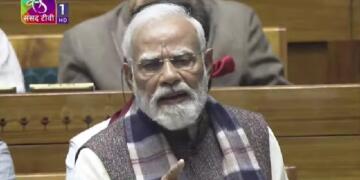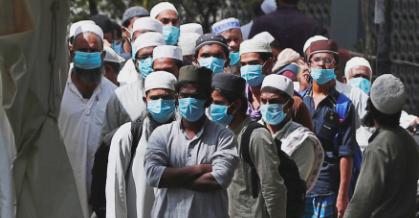As per a report by The Indian Express, Bhilwara model, the highly successful Coronavirus disease containment model which is being replicated nationwide, is “facing a major challenge” (read failed) in Jaipur. The number of COVID-19 cases rose from 168 on April 9 to 370 on Monday in the city, and it now accounts for almost 42 per cent of the 897 cases in the state of Rajasthan.
Coronavirus disease spread in Ramganj- a Muslim dominated locality in the city, from a person who returned from Oman on March 12.
“All cases from the Ramganj area can be traced to this person. He is responsible for passing on the infection directly to 17 people, including his family members, while one of his friends is suspected to have passed it onto almost a dozen people,” said Additional Chief Secretary (Health) Rohit Kumar Singh.
After the cases started rising, the health department of the state tried to implement the Bhilwara model for containment. But the model is unsuccessful in Ramganj because the locality in Muslim dominated, and therefore, comes with all the typical problems of ghettoized Muslim colonies like- high population density, lack of cooperation with government officials, and unhygienic practices.
“It is practically impossible for people to maintain physical distance even if they want to,” said ACS (health) Rohit Kumar Singh. “Houses are small with no space between them and shared by large families of 10 to 12 people.”
The Bhilwara model became successful due to cooperation by the local population and pro-activeness of the local administration. But in the Muslim dominated locality of Ramganj, the people have refused to provide crucial information to health workers because they were of the view that the government is collecting data for National Population Register (NPR) exercise. In fact, a few locals have also attacked health workers for collecting information. Cooperation improved only after local Congress MLA Rafique Khan asked the residents to do so.
Bhilwara model, which follows ruthless lockdown, isolation, and social distancing and most importantly cooperation from locals, could not become successful in Muslim dominated hotspots, given the obvious problems of these ghettoized colonies.
When the Congress party claimed credit for the success of Bhilwara model and Sonia Gandhi praised Rahul Gandhi’s early warning, Sarpanch of the affected village, Kismat Gurjar, took to Twitter on Saturday and said that the people of the district and not Rahul or the state government should get the credit for the success of Bhilwara model. She said, “I was disappointed. The Bhilwara model was made possible by the hard work of farmers, women, villagers of Bhilwara. In their fight against corona, the locals diligently followed minute instructions, thereby setting an example of self-discipline.”
She further added, “Prime Minister Narendra Modi’s appeal has immensely influenced the people here. The local people have not only followed the lockdown guidelines but also adhered to social distancing and kept their surroundings hygienic.”
भीलवाड़ा वासियों की मेहनत का श्रेय सोनिया गांधी जी द्वारा राहुल गांधी जी को दिया जाना दुःखद हैं। pic.twitter.com/B9tSu52h2e
— Sarpanch Kismat Gurjar (मोदी का परिवार) (@SarpanchOnline) April 11, 2020
Today, Bhilwara has literally come out of the jaws of Stage-III community transmission of Coronavirus, but Rajasthan as a whole remains one of the worst-affected states with a total of 579 cases, it is the fourth worst-affected state in India insofar the Coronavirus outbreak is concerned.
Kota and Jaipur are fast emerging as the new hotspots of COVID-19 in the state as the affected Muslim community is uncooperative. But Bhilwara has made a mark for itself as the local administration has shown the way ahead not only for Rajasthan but for the entire country when it comes to combating the Chinese virus, winning the praise of even the Union Cabinet Secretary Rajiv Gauba.
There are three major reasons behind the spread of Corona. The first being how constantly one is exposed to an infected person; the second is physical proximity to an infected person, and the third is immunity.
In all three sections, Muslims fare poorly; thanks to their culture, poverty, and religious conservatism.
Majority of the Muslim families in India are poor and live ghettoized colonies, as pointed out the Sachar Committee report. Muslims have a very high fertility rate and therefore, population density in Muslim colonies is very high.
Given the fact 10-15 family members live in a small house, most of the family members are constantly exposed to each other. The physical proximity to each other is also very high, thanks to their unhygienic practices.
Muslims perform a purification practice before offering namaz, called wudu. In most of the cases when they offer Namaj at a Masjid, there is a small water pool like area, where all the inmates would take water from to perform the ritual. They would wash their faces, mouth, feet and arms from the same pool. This leaves no doubt in our minds, and it becomes amply clear why the infection rate is so high among Muslims.
In the third criteria, that is immunity, Muslims fare badly due to their religious conservatism and opposition to vaccination, modern allopathic medicines, and excessive focus on meat in the diet.
The Conservative sections of the Muslim community have always opposed vaccination on religious grounds or conspiracy theories. Many clerics have issued a fatwa against immunization and argued this West’s conspiracy to sterilize Muslims. They have also said that this is against the teachings of the Quran.
“When people are unprotected through vaccines, diseases like measles, cholera, meningitis, yellow fever and polio can cause devastating epidemics,” said Katherine O’Brien, Director of Immunization, Vaccines and Biologicals at WHO. “This would not only be catastrophic for those who become ill, but also for health systems—especially those already battling Covid-19. The worst impacts will be felt in the poorest countries, where children are most at risk from these diseases.”
These practices and such mindset of the Muslim community have undoubtedly led to the failure of the highly successful Bhilwara Model in Ramganj.






























